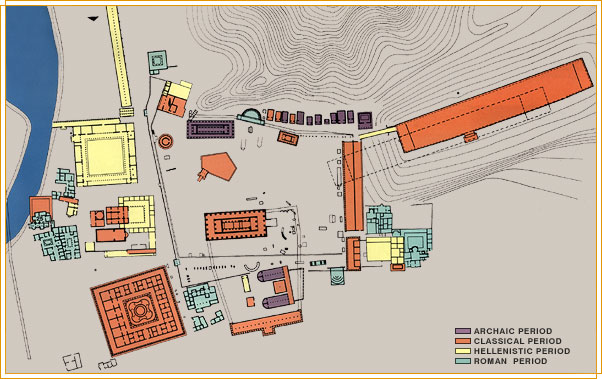 |
|
|
|
||
|
Topography of Ancient Olympia |
|||

|
|||
|
Heraion The Doric peripteral temple dedicated to Hera was the oldest monument in Olympia. It was built in ca. 600 BC. in the Altis, north of the Pelopion and west of the Nymphaion. According to the tradition, donators of the monument were the allies of the Pisatans, the Skillountians, people that lived in the highlands, in the west bank of river Alpheus. The temple - one of the oldest ancient Greek peripteral temples - had an oblong ground plan, with 6 columns on the narrow side and 16 columns on the long side. Originally, all the columns of the temple were made of wood but they were all replaced by stone ones in the Roman period. In his trip to Olympia, in 160 AD, the ancient traveller Pausanias, reports the existence of a wooden column in the opisthodomos of the temple. Internally, the cella was divided by two colonnades in three aisles, a broader in the middle and two narrow sidelong. Clay tiles of laconic type covered the temple's roof. A clay finial (acroterium) in the form of a discus with a multicolored decoration dominated the top of the east pediment. Many sacred objects were kept in the Heraion, like the discus of Iphetos, the larnax (chest) of Cypselus and the table of Colotes. |
